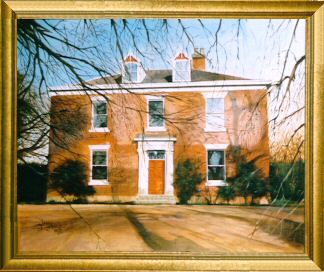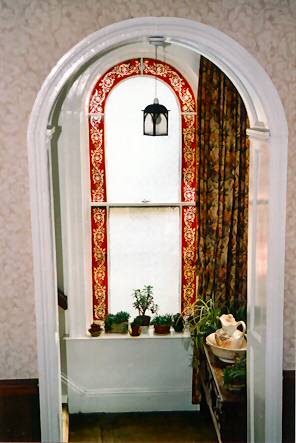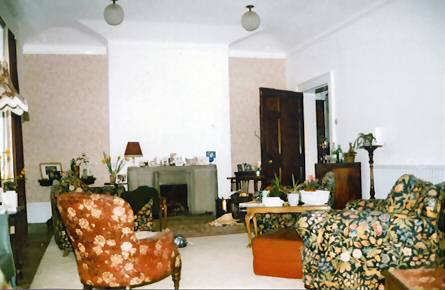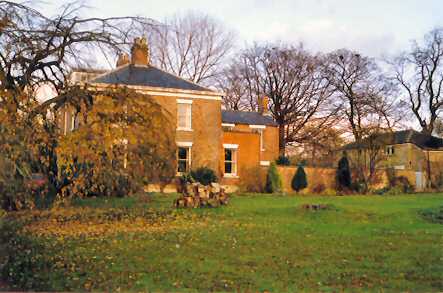Rainton Grove
Houghton le Spring

| This painting of the front of Rainton Grove, was commissioned in 1995. We believe that it was built during the last decade of the eighteenth century, and certainly before the Napoleonic wars (1799-1814) when a window tax was imposed..... one of the windows on the North face was bricked up! |
 |
 |
| The hall with internal front door, decorated at Christmas. The typical spiral of a Georgian banister rail is shown. | The arched window..... If the banister was THE Georgian feature, this window was the archetypal Victorian feature. From the external views you can discern the two extensions to the rear of the original house; This window faced east, halfway up the stairs in one of those extensions. |

| This is a view of the drawing room. It's two windows are the ground floor right hand windows (Looking at the external views of the house) so half of the room is a Victorian addition. The view from the room was the very pleasant lawns and herbaceous border. The Victorian owners had replaced all the ceilings, which included very ordinary wooden cornices but, here in the drawing room, they had sculpted an elaborate plaster cornice. Sadly during the 1950's, chunks fell because of the dampness. Similarly, the fire places (which were in every room including the bedrooms) had to be replaced. Most of those upstairs were in a 1930's style. The only old one was in the other sitting room and was a Victorian design. This one in the Drawing Room was replaced in 1946. There was a great shortage of building materials after the war, and what was available was of a utilitarian nature. |

| A Spring-Time view from the garden - showing 'the two windows' .... This photo was taken in 1962. The auto parked in front of the house is a 1955 Armstrong Siddley Sapphire. |

| This photo was taken in 1985, after the Wych Elm Tree succumbed to the Dutch Elm disease. There were four of these weeping elms along with many of the ordinary elms.... all died - as did all throughout the country. But it now can show, unobscured, the building at the rear of the house. We believe this to be older than the house itself - possibly they were out buildings to an earlier house. It was a coach house with provision for one coach to the right hand side of the building, whilst on the left hand half, there were stalls for three horses. Above was storage for animal feed. A pulley operated lift still existed in one corner until the mid sixties, when the dilapidated building had to be renovated. |